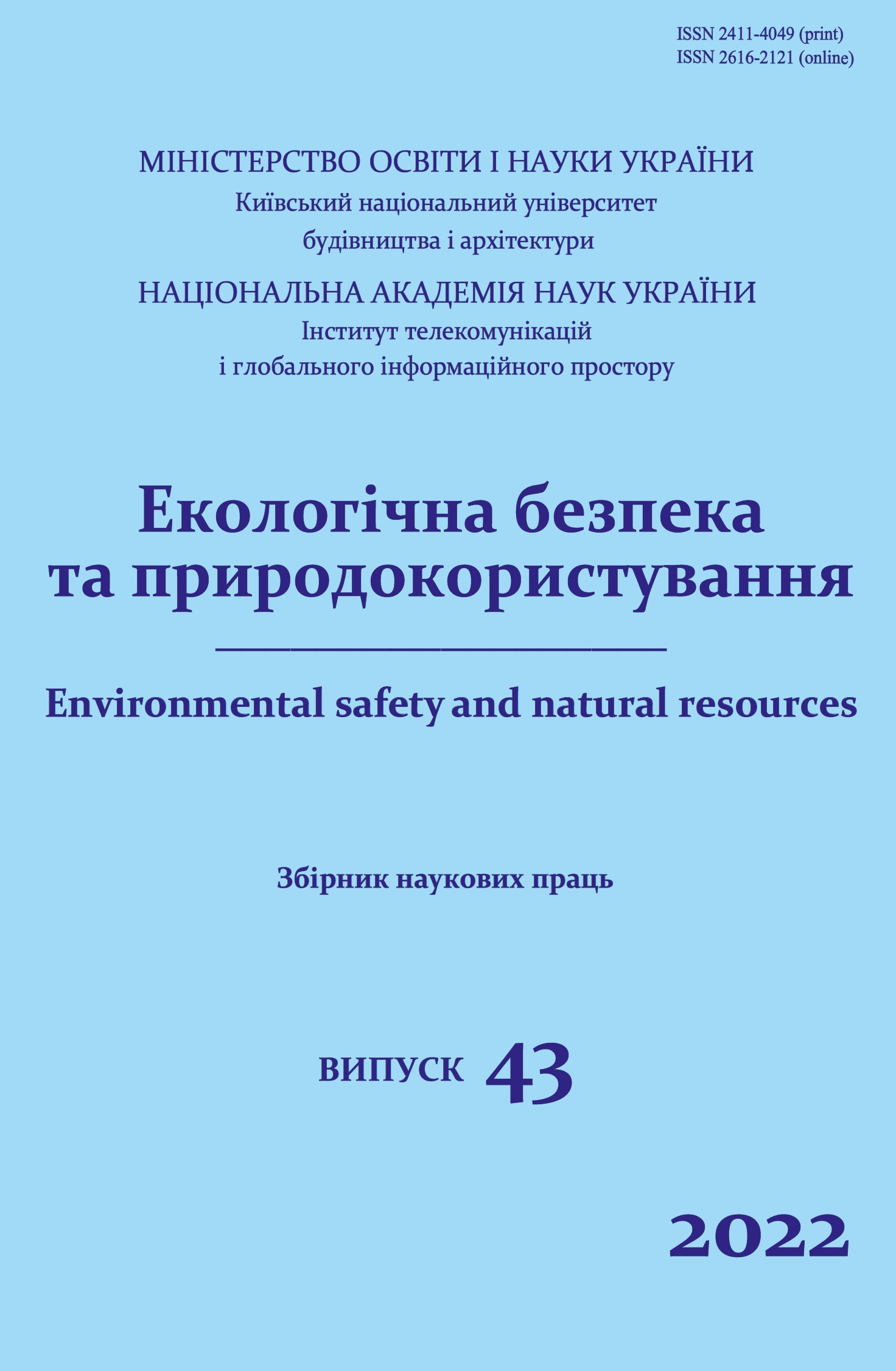Forecast of changes in climate factors of the city of Kyiv and their impact on the life cycle of buildings
DOI:
https://doi.org/10.32347/2411-4049.2022.3.64-72Keywords:
climate change, manifestations of climate change, climate, air temperature, urban environment, metropolis, building materialsAbstract
The problem of global climate change is one of the most important problems of society. Such relevance is due to the fact that the change in climatic parameters has a significant impact on the economic sphere, the ecological situation, social and political life, and the construction industry. The change in the parameters of climate systems has long been beyond doubt. In recent years, due to the perceived threat of global climate warming, interest in long-term interannual climate fluctuations has increased significantly. Therefore, one of the unquestionably relevant tasks is the monitoring of trends in changes in climatic indicators at the local (regional) level. It is these observations on a regional scale that allow us to detect cyclical fluctuations in meteorological values and further judge the change in the Earth's climate in general. When building urban quarters in difficult natural and climatic conditions, along with urban planning and architectural and planning methods of organizing residential structures, one of the key points is the correct selection of fencing materials and structures. Special attention should be paid to their physical properties, thermal conductivity, specific resistance, optical reflectivity, etc. It is also necessary to take into account the location of the construction site, because due to macro- and micro-scale climate-forming factors (radiation conditions, wind regime, form of meso- and microrelief, vegetation, soil, close proximity to the sea, surrounding buildings, etc.) and their due to joint influence in different areas of the city, the difference in temperature and humidity can be significant. The article examines the peculiarities of the manifestation of climatic changes for the city of Kyiv in the context of engineering and construction adaptation and the selection of building materials to create more comfortable living conditions for the residents of the metropolis. It was established that during the last decades in the city the average annual air temperature increased by 0.7–1.2°С, compared to the climatic norm. The most significant increase in the average monthly air temperature in the modern period in the city is observed in the winter and summer months. According to calculations, the average annual temperature will rise gradually and increase by an average of 2.0–2.5°С. On the basis of this, the necessity of conducting further research, creating scientific and practical recommendations, especially in the conditions of modern megacities, which are a factor in climate formation, has been proven. The article analyzes the impact of changes in climatic factors on the life cycle of buildings.
References
Hrebenyuk, N.P., & Barabash, M.B. (2004). About air temperature changes in the cities of Ukraine in the process of urbanization [Pro zminy temperatury povitrya v mistakh Ukrayiny u protsesi urbanizatsiyi]. Scientific works of UkrNDGMI, 253, 148-154 [In Ukrainian].
Buchinsky, I.E. (1963). Climate of Ukraine in the past, present and future [Klimat Ukrainy v proshlom, nastoyashchem i budushchem]. Kyiv: Gosselkhozizdat of the Ukrainian SSR [In Russian].
Second National Communication of Ukraine on Climate Change (2006). Prepared as part of the national action plan for the implementation of the provisions of the Kyoto Protocol to the United Nations Framework Convention on Climate Change, approved by the Cabinet of Ministers of Ukraine dated August 11, 2005, No. 346 [Vtoroye Natsional'noye soobshcheniye Ukrainy po voprosam izmeneniya klimata (2006). Podgotovleno v ramkakh natsional'nogo plana meropriyatiy po realizatsii polozheniy Kiotskogo protokola k Ramochnoy konventsii Organizatsii Ob"yedinennykh Natsiy ob izmenenii klimata, utverzhdennogo Kabinetom Ministrov Ukrainy ot 11 avgusta 2005 g., №346]. Kyiv [In Russian].
Voloshchuk, V.M., Boychenko, S.G., Stepanenko, S.M. et al. (2002). Global warming and the climate of Ukraine: regional ecological and socio-economic aspects [Hlobalʹne poteplinnya i klimat Ukrayiny: rehionalʹni ekolohichni ta sotsialʹno-ekonomichni aspekty]. Kyiv: VOC "Kyiv University" [In Ukrainian].
Lipinskii, V.M., Dyachuk, V.A., & Babichenko, V.M. (Eds.). (2003). Climate of Ukraine [Klimat Ukrayiny]. Kyiv: Raevsky Publishing House [In Ukrainian].
Izrael, Yu.A., Gruza, G.V., Kattsov, V.M., & Meleshko, V.P. (2001). Global climate change: the role of anthropogenic impacts [Izmeneniya global'nogo klimata: rol' antropogenovykh vozdeystviy]. Meteorology and Hydrology, 5, 5-21.
Stepanenko, S.M. (2013). Climate Dynamics and Modeling [Dynamika ta modelyuvannya klimatu]. Odesa: Ecology [In Ukrainian].
Downloads
Published
How to Cite
Issue
Section
License
Copyright (c) 2022 Zhukova O., Nehoda N.

This work is licensed under a Creative Commons Attribution 4.0 International License.
The journal «Environmental safety and natural resources» works under Creative Commons Attribution 4.0 International (CC BY 4.0).
The licensing policy is compatible with the overwhelming majority of open access and archiving policies.

